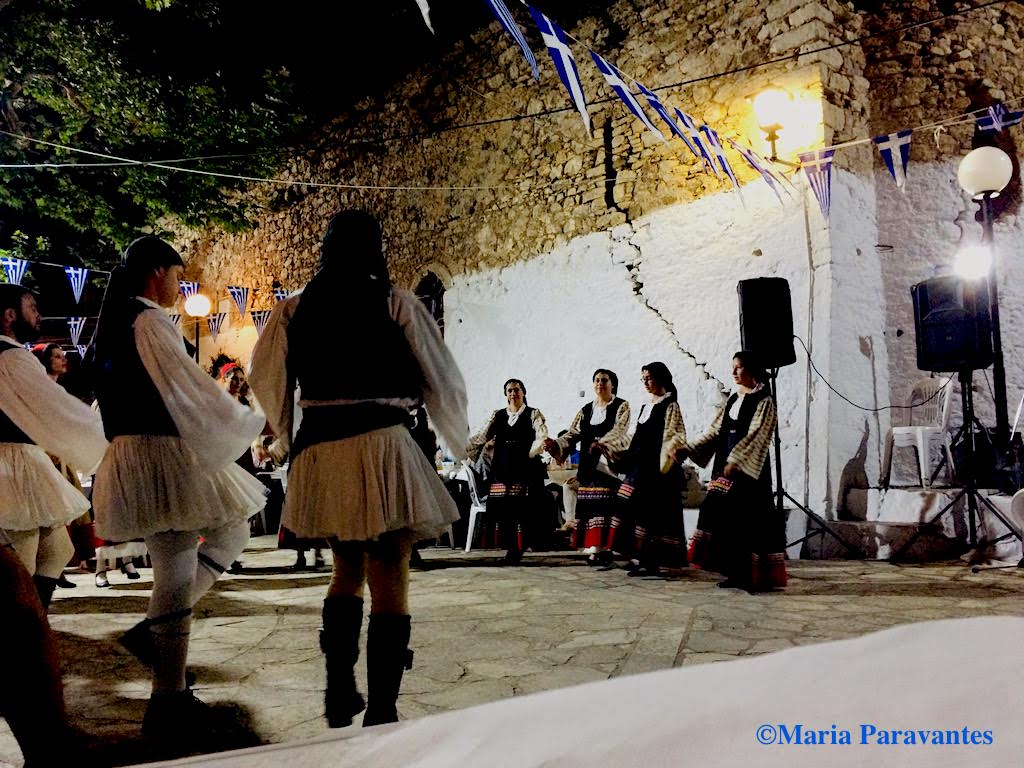
“Kaour Ekanate” (welcome) reads a wood-carved sign as you reach Kastanitsa, a postcard-perfect village nestled in the Parnonas mountains in Arcadia, Greece. Getting to the village is an experience in itself, one that you will never forget and may even seek, as I do, to repeat over and over again.
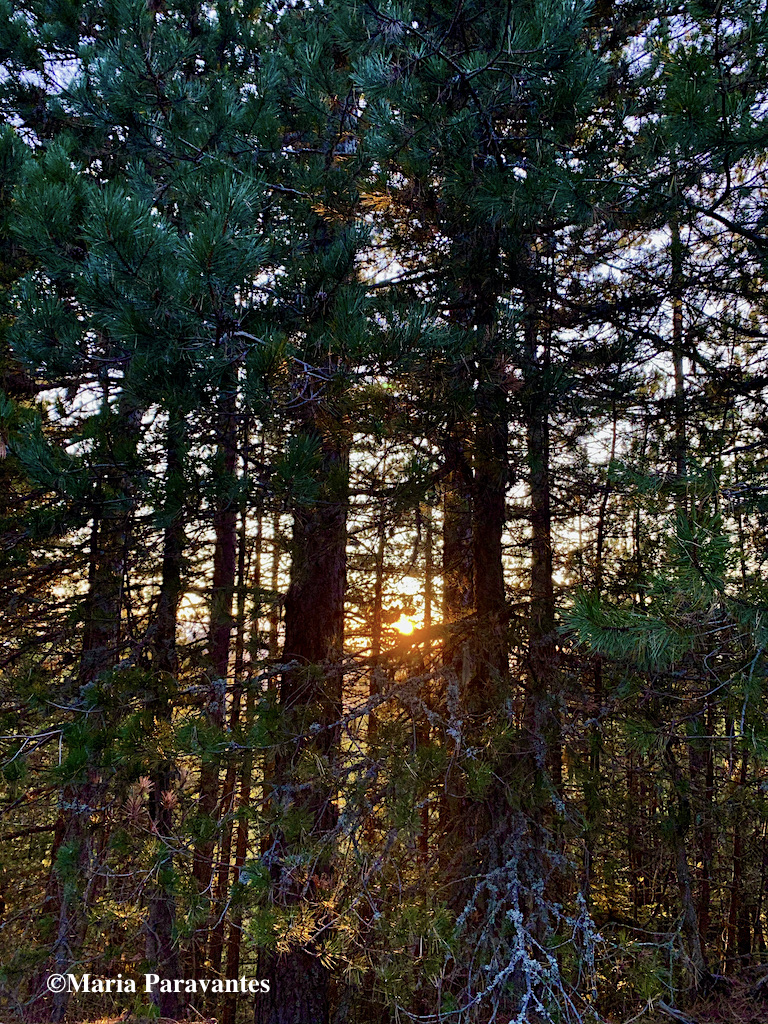
I first discovered this village and others of the Tsakonia several decades ago: back then by chance, after getting lost on our way from seaside Astros to Tripolis, my mother’s hometown.
I can clearly remember the awe combined with the adrenalin rush and fear created by the imminent darkness, the towering trees and the thick forest. Add to that a narrow dirt road that would abruptly stop, no light, no visibility and no signs of human existence… and you have the perfect ingredients to a blockbuster thriller.
But as we meandered through the woods of what to my youthful and imaginative mind back then seemed like they were enchanted – I could have sworn I saw fairies and goblins of all sorts peering out through the trees – we reached Prastos, the former capital of Tsakonia, a region where one of the world’s oldest languages is still spoken. There and then, my passion for this region began.
Tsakonia: In the Footsteps of the Ancient Spartans
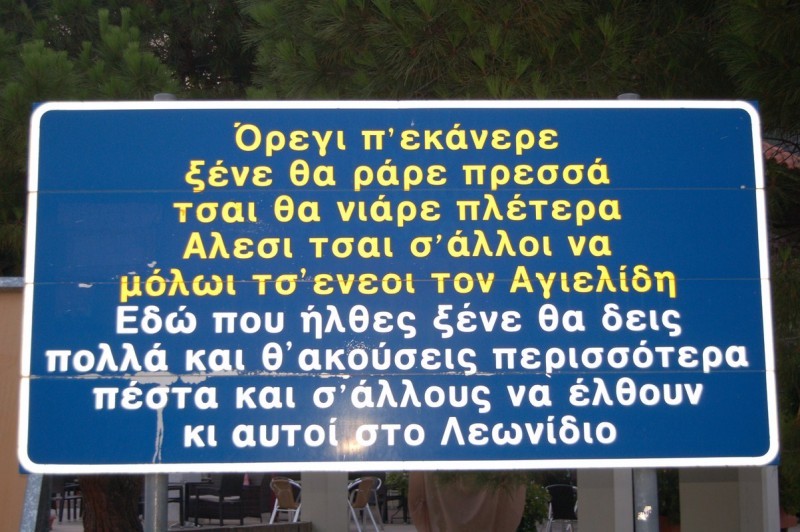
Tsakonia is a territory in the Eastern Peloponnese in the Kynouria province home to the Tsakones, a local people who speak the Tsakonian dialect and who continue to this day to preserve traditions and customs that go back to ancient Greece.
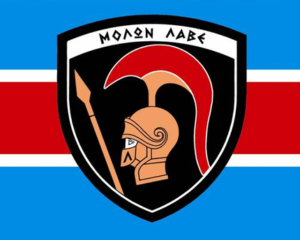
The Tsakonia territory covers most of southeastern Kynouria down to the Argolic Gulf and includes the villages of Kastanitsa, one of the oldest settlements in the province, Prastos, Sitaina, Agios Andreas, Pera Melana, Sapounakaika, Sabatiki, Pragmateftis and Vaskina as well as the fishing villages of Leonidio and Tyros.
Studies reveal that these people are the direct descendants of the Laconians, or in other words of the Ancient Spartans (remember Leondias of Sparta?). But what makes them so special is that they still speak an oral variant of Ancient Greek almost 3,000 years later unadulterated.
Prastos was their first capital with a population then of some 6,000 people. The village and its church were burnt down in 1826 during the Greek War of Independence by Ibrahim and the Ottoman Turks.
►All about the Greek War of Independence here and here.
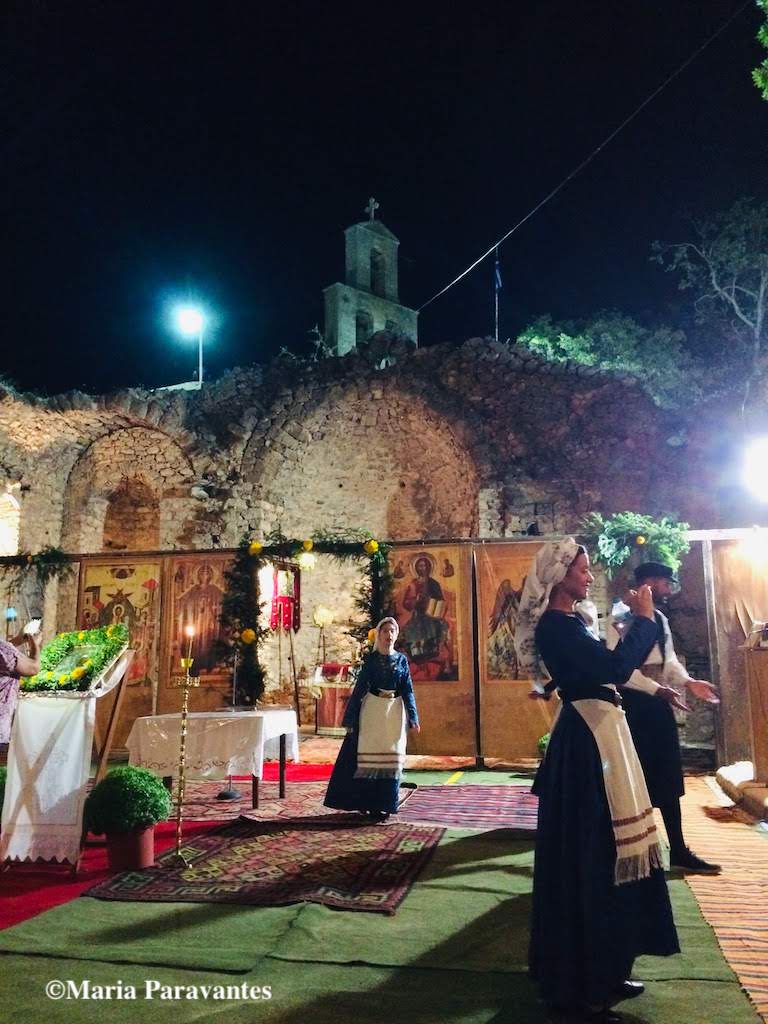
Every year, the villagers mark the day at the church which they intentionally did not rebuild to remember.
The second village we reached later that exciting night was Kastanitsa. We could barely see the traditional stone rooftops glistening in the moonlight like silver.
Since then, getting there has become easier. And the towns are brimming with life particularly in the summer.
Tsakonika: Efforts to Keep the Endangered Language Alive
When you reach Kastanitsa and the other villages you will see signs with “Kaour Ekanate”- a welcome message in the Tsakonian dialect.
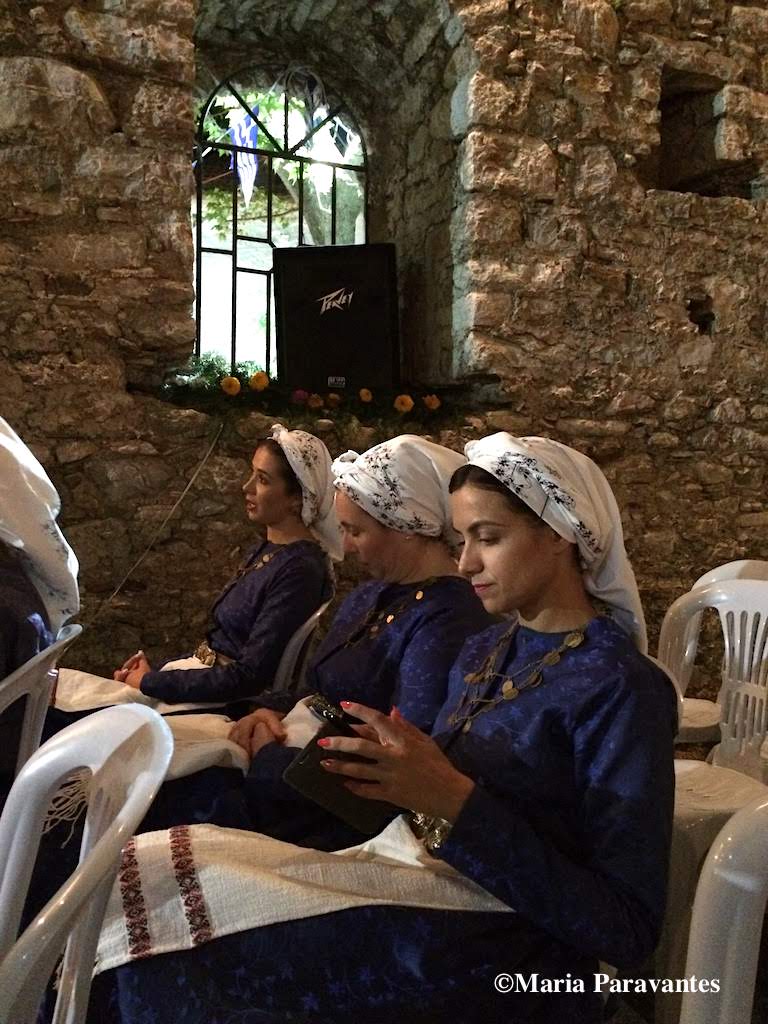
The language is a variant of the Ancient Greek Doric dialect which was spoken by the ancient Spartans. The notorious phrase “Molon Lave” that warrior king Leonidas yelled out enraging Persian king Xerxes during the battle of Thermopylae in 480 BC was in the Laconic – Doric dialect and means (roughly translated) “Come and Get it”. (Laconic in English means “short and to the point” derived from the Greek word.)
The Tsakonian together with the Pontic Greek, Cappadocian Greek and Griko of the Greek villages in Southern Italy (Magna Graecia) are the only “living languages” (still spoken) deriving from the Ancient Greek.
There were three idioms of the Tsakonika – today only two remain in use, those spoken in Kastanitsa and Sitaina and in Prastos and Leonidio.
►Why You Should Visit Leonidio Greece at Least Once

Though the language uses the same alphabet with Greek, the phonetics are very different. And because it was mainly oral, passed down from one generation to the next, it is much harder to safeguard. To make matters worse, for many years in the past, locals were ashamed of speaking thinking it was a “peasant language” and encouraged their children to learn Modern Greek instead.
Tsakonian was the only spoken language in the Tsakonia villages in the late 1960s and this due to the remoteness and inaccessibility of the area and until 1997 was still taught at local schools mainly in the fishing town of Tyros.
This resulted in the Tsakonic dialect – one of the oldest living languages in the world – to sadly die out over the years, so much so that UNESCO listed it as a “severely endangered” language spoken by a couple of thousand today.
The good news is that efforts are being made to revive the dialect as well as the cultural traditions, crafts, songs and dances by local societies in Leonidio and Tyros.
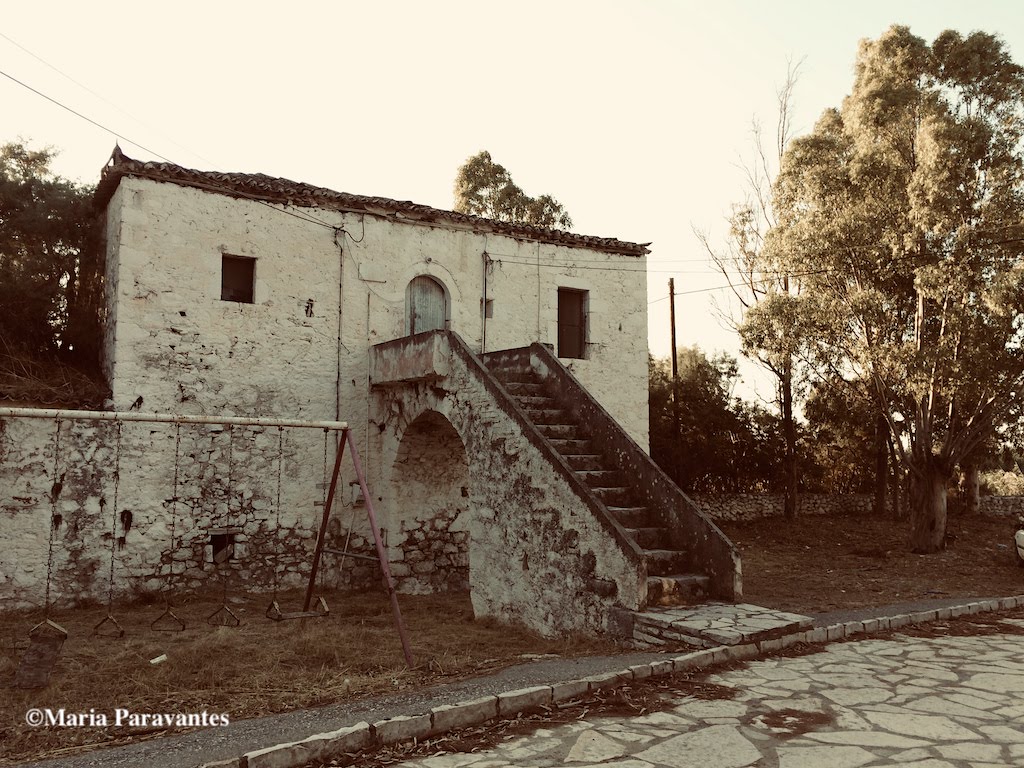
One such group is Tsakonoparea and its Facebook page run by Panos Marneris, where posts are in Tsakonika. There is also The Tsakonian Archives, which has for 67 years worked to preserve both language and traditions.
At the same time, UNESCO has made an inventory of the Tsakonian dance, language, traditions, outfits, weaving craft, and Orthodox Easter celebrations of Leonidio.
►Read about Orthodox Easter in Leonidio.
Traveling to Tsakonia: Maria’s Travel Tips
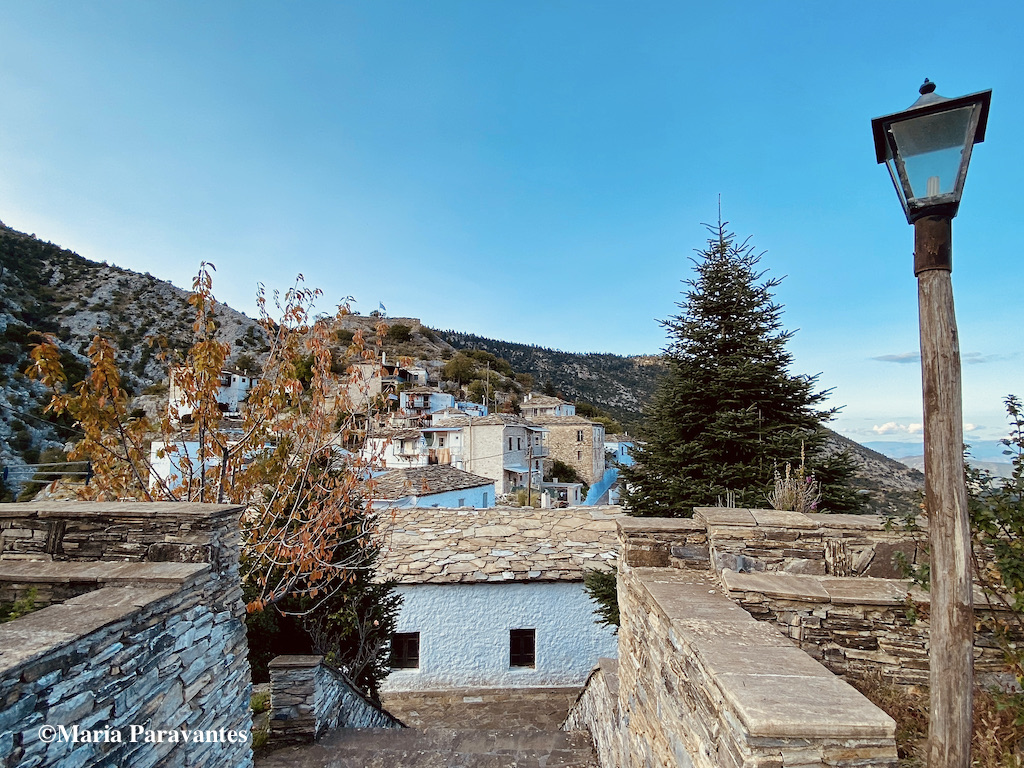
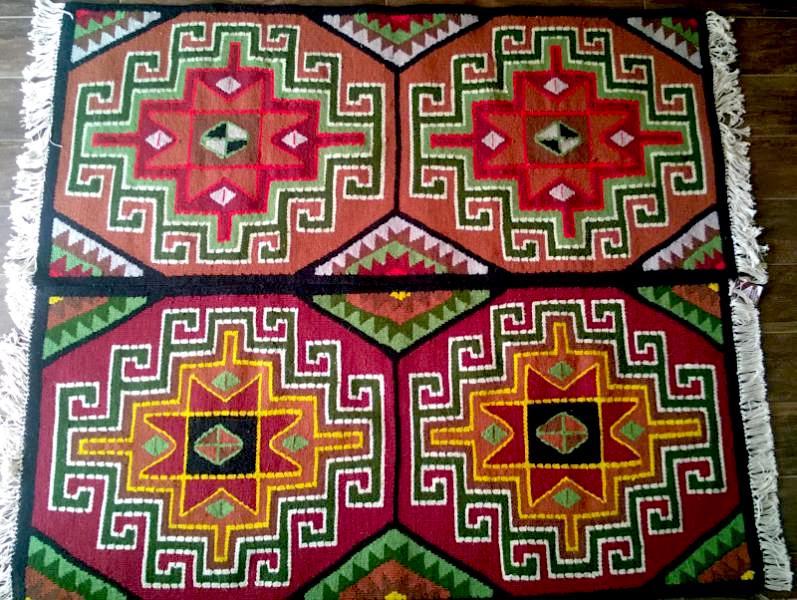
✓ Make your way to Kastanitsa either from the town of Tripolis or from Astros on either side of Mt Parnonas. I recommend starting your trip on one side and then traveling to the other. The drive up from Tripolis takes about an hour and a half. There is no best time to visit Kastanitsa. All seasons have a particular beauty that will win you over but have in mind that winter usually means snow. In summer expect it to be much cooler than the coastal villages below.
✓ Besides the famed chestnut forest lending its name to Kastanitsa, the village is also renowned for its distinctive local traditional architecture featuring three-storey stone tower-houses some dating back 300 years. So a stroll through the village is an absolute must.
►Visit Kastanitsa
✓ Make sure you try pork and chestnuts, chestnut garlic sauce, rooster with homemade “hilopites” pasta, lamb, mountain greens (“horta“), and the fantastic chickpea and chestnut casserole. Don’t forget to accompany this with red wine. And if you’re a sweet lover like me, buy some chestnut or walnut (“karydaki”) spoon sweet which is traditionally offered as a “kerasma”. You can find most of these sweets in all the Tsakonia villages.
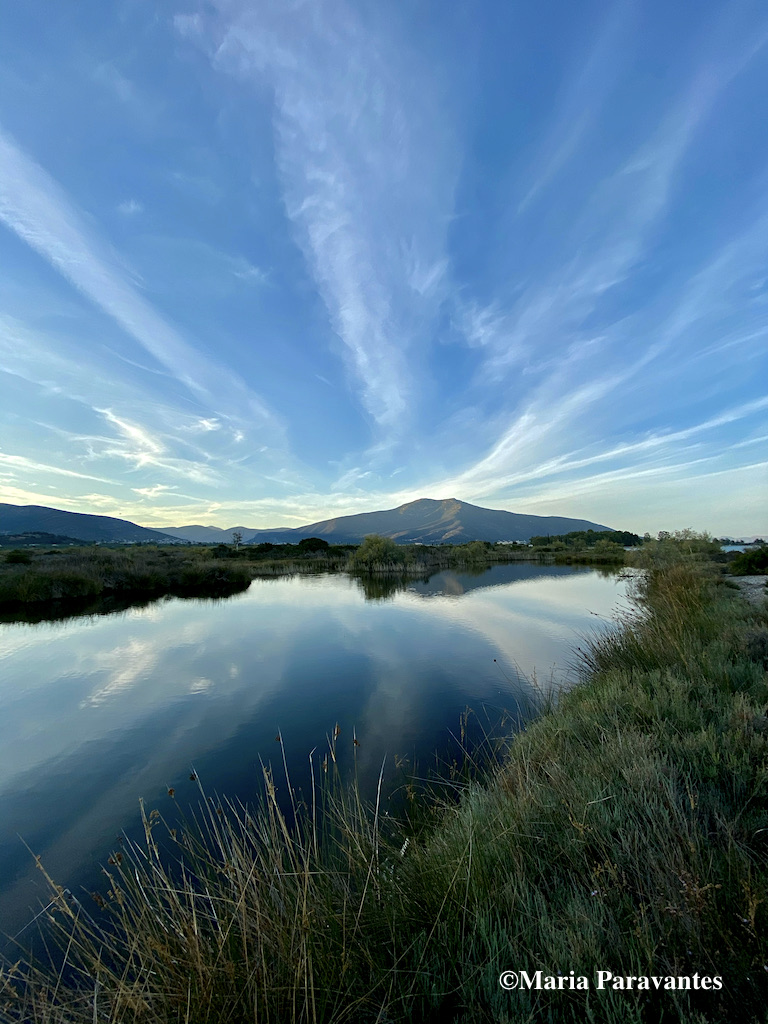
✓ Don’t forget to buy homemade jams and spoon sweets, mainly chestnut-based. Make sure to ask a villager or at the taverna where you can buy local products. There is a store at the start of the village in Kastanitsa.
✓ The Tsakonia villages were also known for their weaving works or “yfanta”. So much so, that one of the region’s “weavers” – Marigo Merikaki won awards in Paris, Athens and Liege in the late 1800s for her woven masterpieces. Today, you can still find these beautiful handmade rugs known as “kilimia” or “tagaria” in the villages. Thankfully, younger generations are learning from their parents and grandparents, preserving the traditional craft for the next generations. Visit Tsakonika Yfanta in Tyros to see for yourself.
✓ Each year in October, during chestnut season Kastanitsa hosts a major food festival: the Kastanitsa Chestnut Festival. Don’t miss it.
✓ In July, Leonidion hosts one of the biggest food-related events in the area, the Melijazz Festival dedicated to the unique-to-the-region Tsakonian eggplant featuring the prized vegetable in dozens of dishes and sweets. Leonidio (or Lenidi) is one of the oldest seafaring towns in Greece.
►All about the MeliTzazz Festival
✓At the end of August, Panagia Prastou built in 1762 and burnt in July 1826 is commemorated as part of the grandest celebration in Greece: the Dormition of the Virgin Mary.
►All about the Dormition of the Virgin Mary (Panagia) celebrations
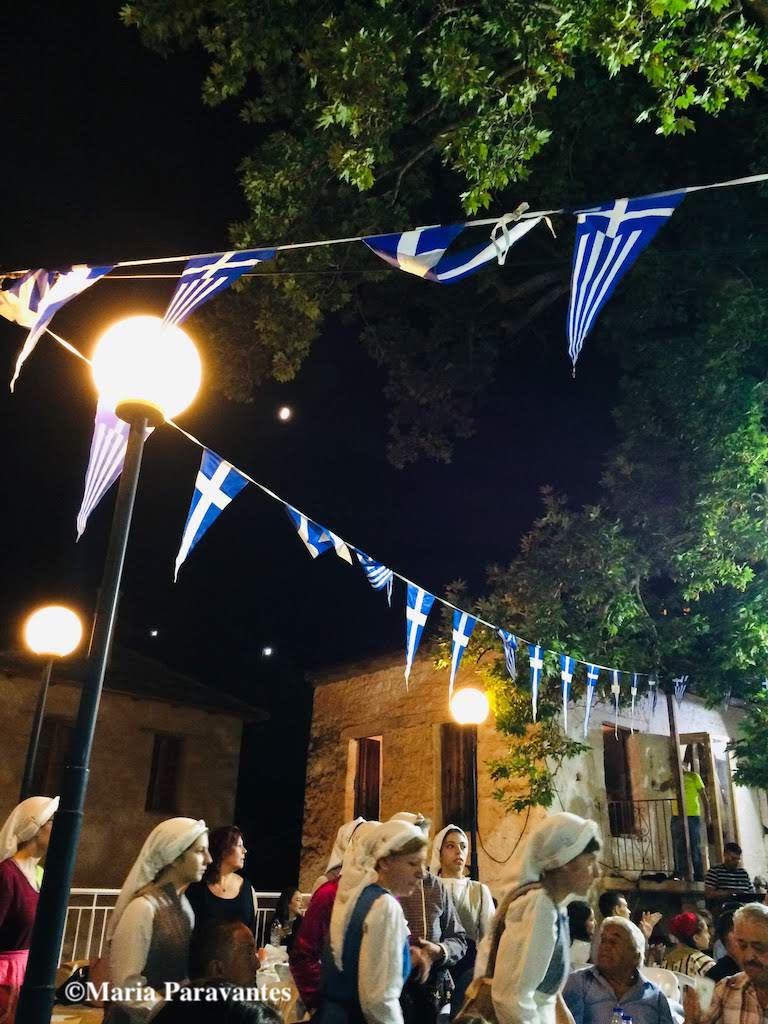
Expect one of the most Dionysian experiences – the panegyri (open-air festival), where besides eating excellent local cuisine you will enjoy traditional Tsakonian song and dance. Dressed in folk costumes handed down fron one generation to the next, locals will dance the snake-like “Tsakonikos” (also known as the Dance of Theseus) believed to date back to antiquity and signifying Theseus’ venture out of the Labyrinth. Myth has it that Theseus and his companions danced the “Geranos” a similar dance in order to prepare for the feat.
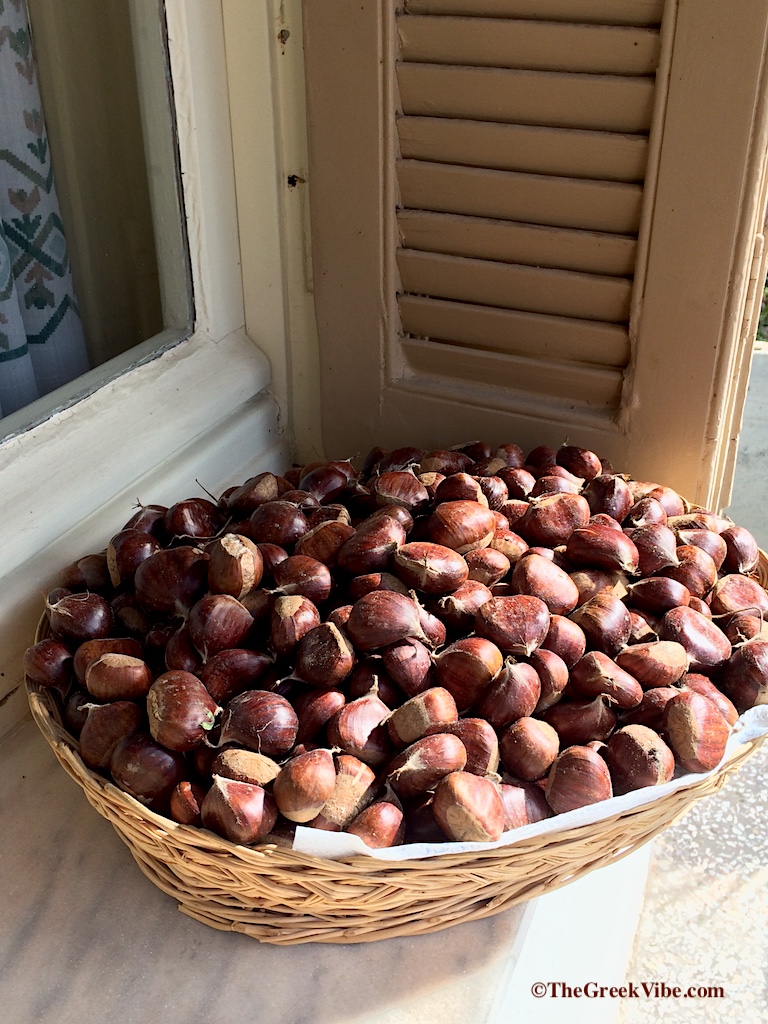
✓ Visit the isolated village of Kosmas. Besides its stone fountains nearby you’ll find the prehistoric settlement of Geraki, home to an ancient acropolis, a Byzantine fortress, and some 30 Byzantine-era chruches dating back to the 12-15th centuries. Buy locally-produced graviera cheese.
✓ You will find accommodation at traditional guest houses such as Antoniou in Kastanitsa, Pritanio in Tsintzina (Polydroso), but also in Karyes (known by locals as Arahova) or Agios Petros (11km from Kastanitsa) – all mountain villages (recommended in the winter), or at accommodation facilities in the seaside towns of Astros, Agios Andreas, Tyros, or Leonidio (recommended in the summer to combine sea and mountain).
🎶 I end today’s post with a traditional demotiko song from the Peloponnese region “Fotaei to Feggaraki Mou” … or in other words: “the moon shines up above and down below showing me the way to my love” – a song sung during the engagement (“arravonas”) dinner by the groom. Here featuring Mihalis Kallergis from Mani.
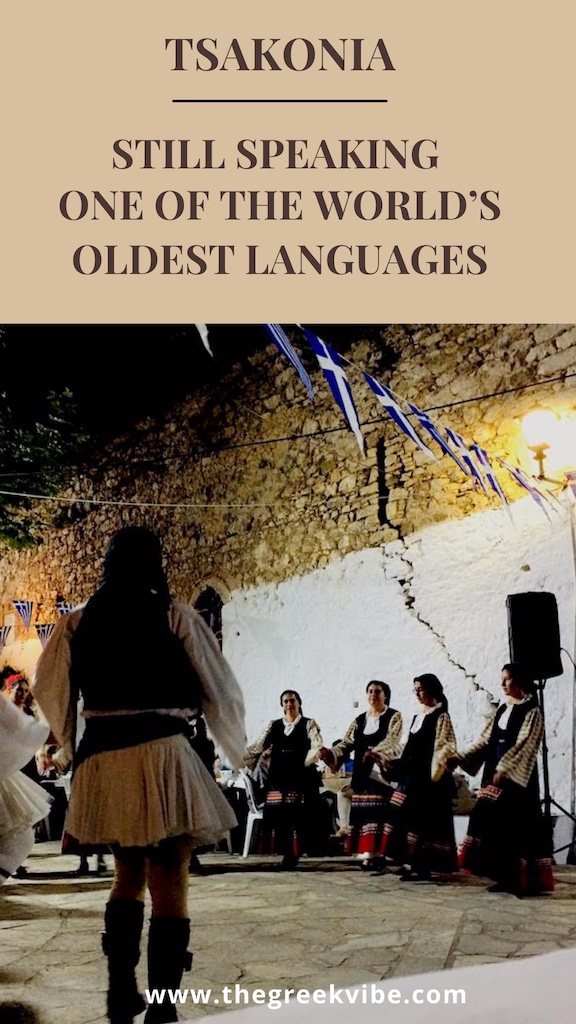

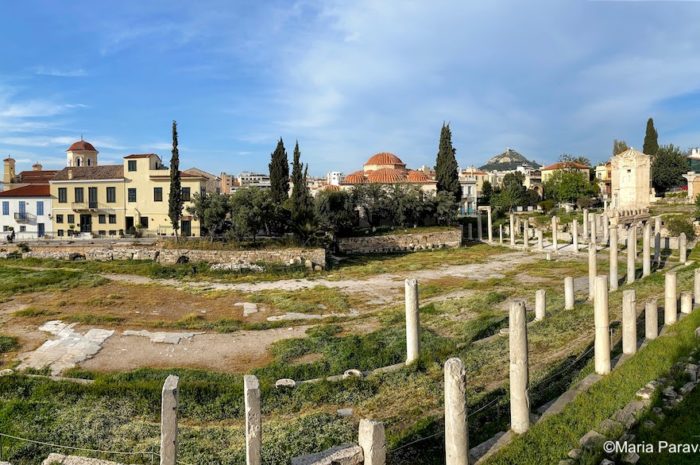
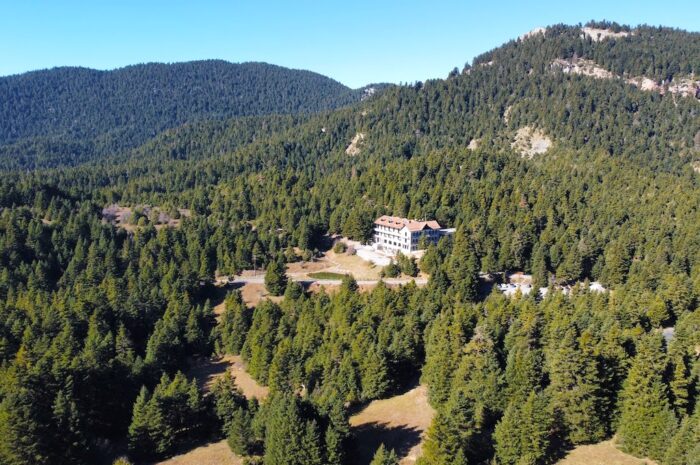
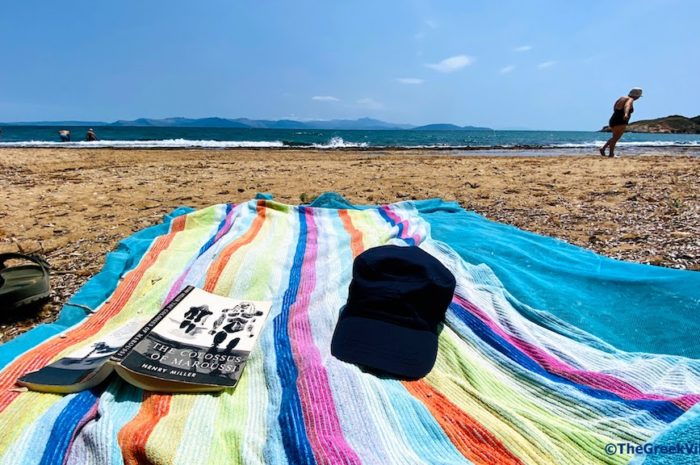
So interesting! I want to come back for the chestnut festival too!